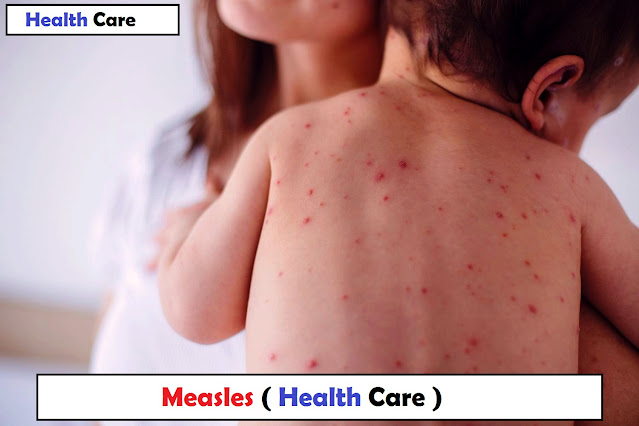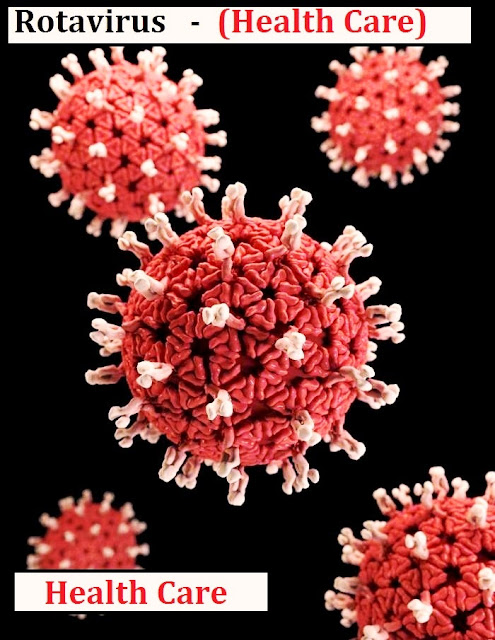Measles Symptoms – Cause – Treatment – Health Care
Overview
The measles, a paediatric ailment, is brought on by a virus. Measles, which was historically fairly prevalent, can now be nearly always avoided through vaccination.
Rubeola, another name for the measles, is severe and infectious and can occasinally be deadly in young children. Measles still claims the lives of more than 200,000 people per year, largely children, despite the fact that death rates have been declining globally as more youngsters take the vaccination.
Measles hasn't been widespread in the US in approximately 20 years because of higher immunisation rates overall. Most recent measles outbreaks in the U.S. were brought in from overseas and mostly impacted the unvaccinated or those who were unsure of their vaccination status.
Symptoms
10 to 14 days after introduction to the virus, measles signs and symptoms start to manifest. Measles symptoms and signs frequently include:
· Fever
· a dry cough
· rancid nose
· Throat pain
· Angular eyes (conjunctivitis)
· Koplik's spots are tiny white dots with bluish-white centres on a red backdrop that can be seen on the cheek's inner lining within the mouth.
· a skin condition marked by broad, flat spots of skin that frequently merge together.
Within two to three weeks, the infection develops in phases.
contamination and incubation. The measles virus spreads throughout the body throughout the first 10 to 14 days following infection. At this moment, there are no measles symptoms or indicators.
non-specific symptoms and indicators The first symptoms of measles are often a mild to moderate fever, along with a persistent cough, a runny nose, itchy eyes (conjunctivitis), and sometimes a sore throat. This generally minor ailment might last 2 to 3 days.
rash and a severe illness. The rash is made up of little red dots, some of which are slightly elevated. The skin appears splotchy red when lumps and spots are grouped together. The face erupts first.
The rash gradually moves from the arms, chest, and back to the thighs, lower legs, and feet during the following few days. The fever also climbs rapidly during this period, frequently reaching 104 to 105.8 F (40 to 41 C).
Recovery. The measles rash might linger for seven days or more. The rash gradually disappears, first on the face and then moving down to the thighs and feet. The cough and mmr vaccine darkening or peeling of the skin where the rash was may last for about 10 days after the other symptoms of the illness have subsided.
When is the measles virus
transmissible?
Beginning four days before the rash appears and ending when the rash has been present for four days, a person with measles can transmit the virus to others for about eight days.
When should I see a doctor?
If you or your child has a rash that resembles the measles or you suspect that you or your child may have been exposed to the disease, contact your healthcare provider right away.
Talk to your doctor about your family's immunisation history, especially before your kids start daycare, school, or college and before any international travel outside of the U.S.
Causes
The measles is a highly contagious disease.This suggests that it is very easy to transmit to others. Measles is brought on by a virus that can be found in a kid's or adult's nose and throat. When someone coughs, sneezes, or talks, measles-transmitting droplets are discharged into the air and might be swallowed by others. The infectious droplets might stay in the air for over an hour.
The infectious droplets might also touch down on a surface, where they might survive and spread for a while. You can catch the measles by wiping your eyes, putting your fingers in your mouth, or blowing your nose after coming into contact with a measles rash contaminated surface.
From around four days before to four days after the rash emerges, measles is most infectious. When exposed to a person who has the measles virus, over 90% of persons who have never had the disease or had a measles vaccination will get it.
Risk elements
Measles
risk factors include:
being immunised. You are far more likely to contract the disease if you haven't had the measles vaccine.
foreign travel. You run a higher risk of contracting measles if you visit
nations where the disease is more prevalent.
being lacking in vitamin A. You are more likely to have more severe measles
symptoms and consequences if your diet is deficient in vitamin A.
Prevention
The measles vaccine is advised for adults and children to prevent measles, according to the U.S. Centers
for Disease Control and Prevention (CDC).
Children's measles
vaccination
The MMR vaccination, which protects against measles, mumps, and rubella, is typically administered. The MMRV vaccine, which protects against varicella, may also be included in this vaccination. Before starting school, doctors advise that children receive the MMR vaccination between the ages of 12 and 15 months and again between the ages of 4 and 6 years.
The two doses of the MMR vaccination are 97% effective in preventing measles and providing lifetime immunity. In the small percentage of people who contract measles after receiving a vaccination, the symptoms are frequently mild.
Be mindful of:
· When your kid is 6 to 11 months old and you plan to travel outside of the United States, talk to your child's doctor about getting the measles vaccination sooner.
· Your kid or adolescent may require two doses of the vaccination spaced four weeks apart if they didn't receive the two doses at the prescribed periods.
Babies born to
mothers who have received the vaccination or who are immune due to having had
the disease are often protected from measles for around 6 months after
delivery. The vaccination can be administered as early as 6 months of age if a
child needs measles protection before the age of 12 months, such as for international
travel. However, young children who receive vaccinations still need to receive
them later, at the recommended ages.
A child can avoid a
delay in protection from measles, mumps, and rubella infection by receiving the
MMR vaccination as a combination of recommended immunisations, and this can be
done with fewer injections. The combined vaccination is equally secure and
reliable as the immunisations administered separately.
Adult vaccination for
measles
Vaccination against measles may be necessary if you're an adult without documentation of immunity and:
· has a higher chance of contracting the measles, such as those who go to college, travel abroad, or have a job in a hospital.
· born in 1957 or a later year. You cannot contract measles again if you have once had it because your body has strengthened its defences against the illness. Simply put, those who were born or resided in the United States before 1957 are immune to measles.
The MMR vaccination has no
known connection to autism.
Following the MMR research in 1998, some decreases in vaccination rates were observed in the UK and elsewhere, and some people theorised that there could be a connection. Since then, there have been several concerns expressed regarding a potential connection between the MMR vaccination and autism. The American Academy of Pediatrics, the National Academy of Medicine, and the CDC have all published detailed investigations, but none of them has found any conclusive evidence of a connection between the MMR vaccination and autism.
These groups point out that toddlers with autism are frequently diagnosed between the ages of 18 and 30 months, or about the time when kids receive their first dose of the MMR vaccination. But this temporal coincidence shouldn't be interpreted as a cause-and-effect relationship.






